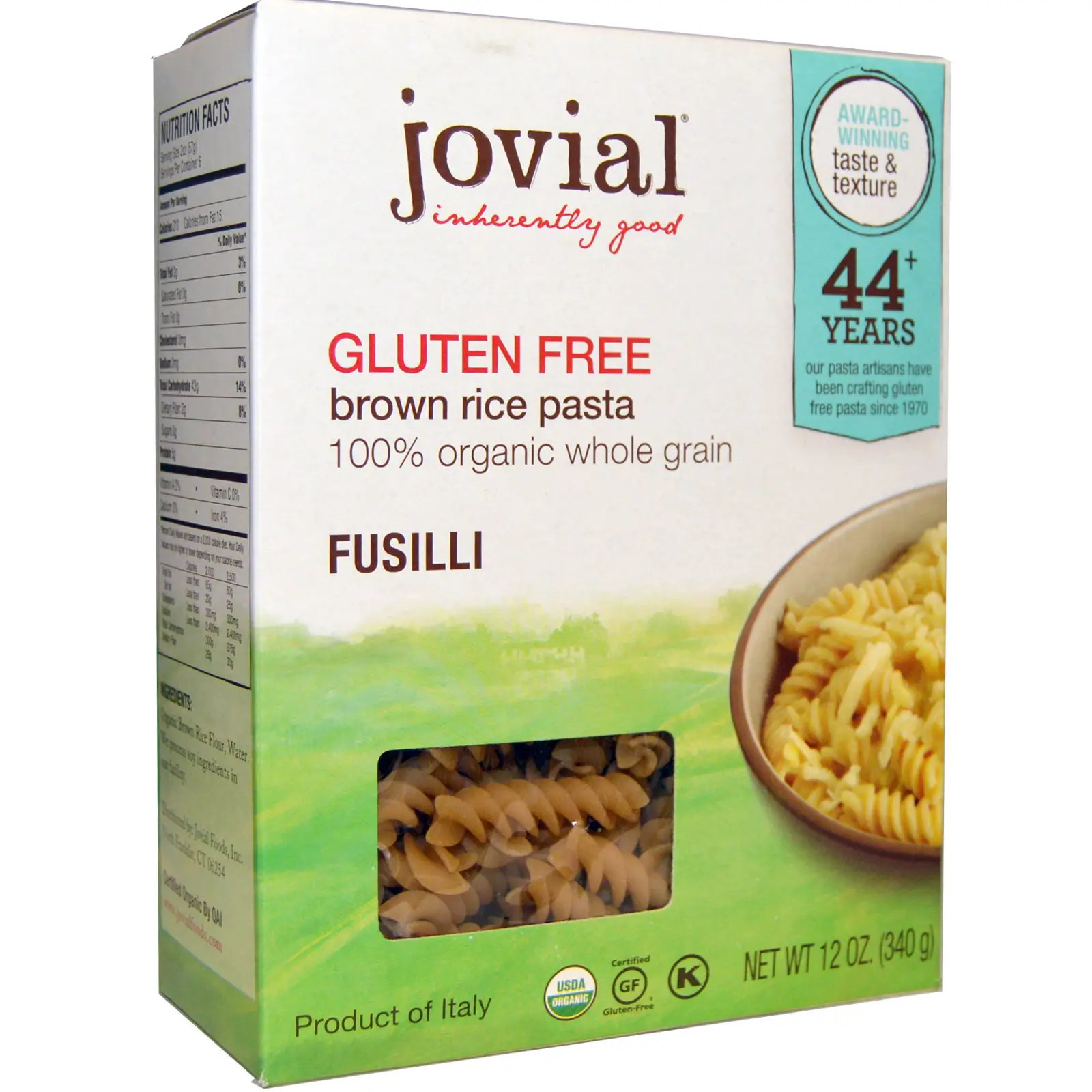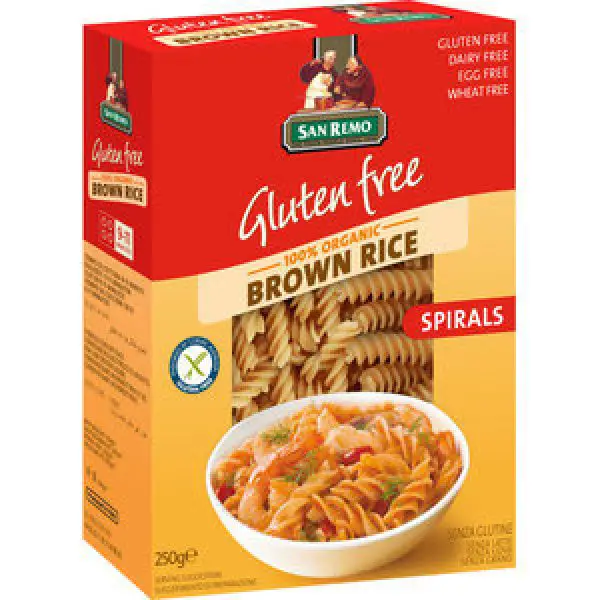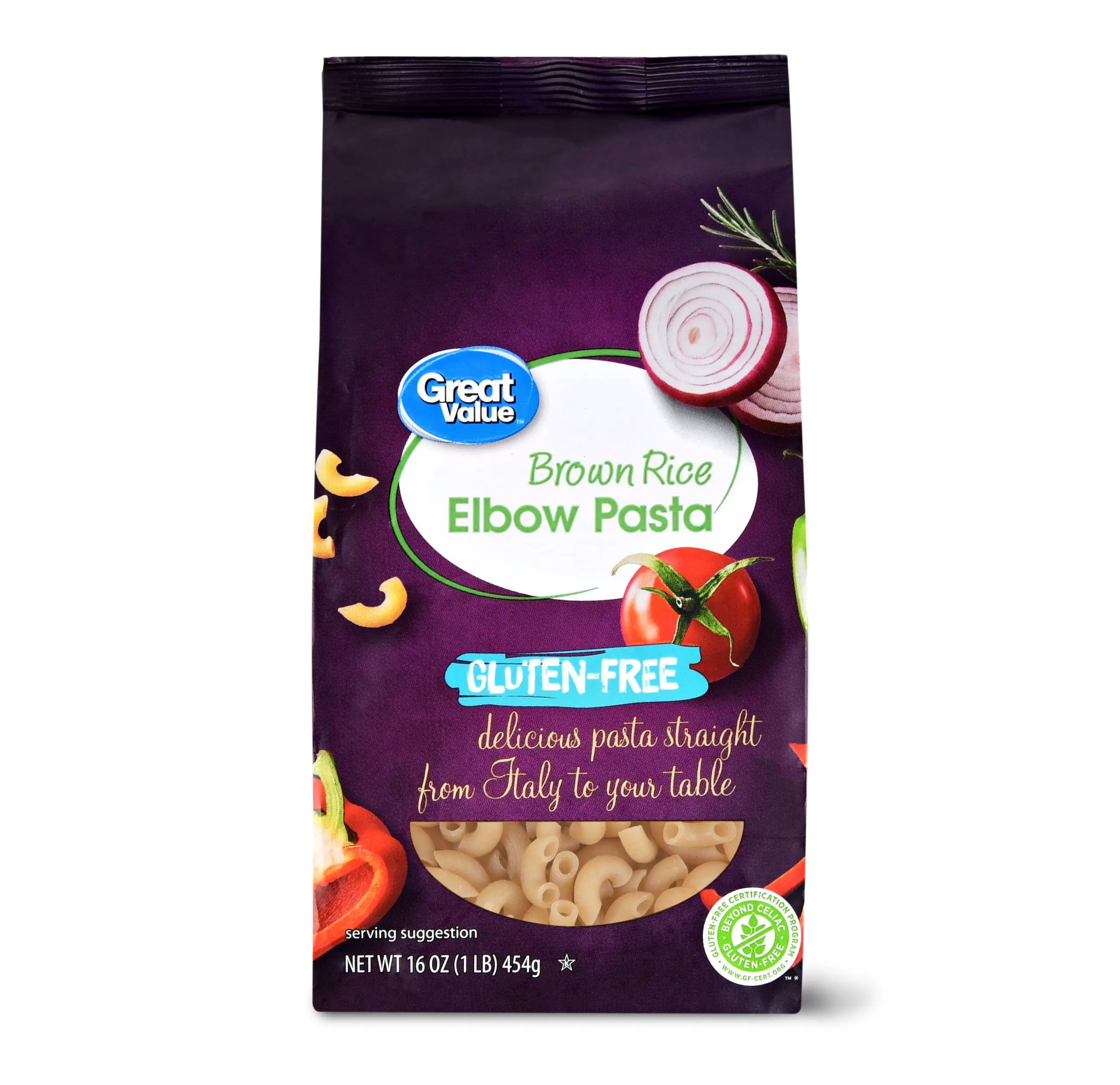Do Rice Vermicelli Noodles Have Gluten
No, rice vermicelli noodles do not contain gluten. Rice vermicelli noodles are made with rice, water, and a small amount of salt. Rice does not contain gluten, so rice vermicelli noodles are safe for those following a gluten-free diet.
Rice vermicelli noodles are a great alternative to wheat-based noodles for anyone who cannot tolerate gluten. They are easy to use and cook quickly. Rice vermicelli noodles can be cooked in hot or cold dishes and come in a variety of shapes and sizes.
They are a great addition to stir fries, noodle salads, soups, and noodle bowls. Compared to wheat noodles, rice vermicelli noodles have a slightly firmer texture and a light, mild flavor. They are a great way to add variety to your meals without introducing gluten into your diet.
Can Gluten Intolerant People Eat Rice Noodles
Yes! Rice noodles are a great option for those who are gluten intolerant as they are typically made from just rice flour and water. They are also an excellent source of nutrition and can be used in a variety of dishes.
Since they are gluten-free, people who suffer from celiac disease or have a gluten sensitivity can enjoy them without any worrying about their health. Rice noodles do contain carbohydrates, so those on a low-carb diet may want to speak with their doctor before consuming them in large amounts.
In addition, they can be quite sticky, so they should be cooked properly to avoid any unpleasant texture. But overall, they are a great option for those who have gluten sensitivity and can be used in a variety of dishes.
Are Rice Noodles Anti Inflammatory
Rice noodles can be beneficial for reducing inflammation due to their low GI rating. They are also a great way to increase your fiber and nutrient intake from grains, which can help to reduce inflammation.
Whole grain rice noodles, such as brown rice noodles, provide more fiber and vitamins than white rice noodles. Rice noodles contain many antioxidants and anti-inflammatory compounds, such as quercetin and ferulic acid, which can help reduce inflammation and oxidative stress.
Additionally, they are rich in vitamins and minerals that are important for health, including magnesium, vitamin E, and vitamin K. Eating rice noodles as part of a balanced diet can help reduce inflammation, especially if combined with other anti-inflammatory foods like fruits, vegetables, and healthy fats.
For those with an inflammatory condition, its best to speak to a nutritionist or health professional to get an individualized dietary plan to reduce inflammation.
Recommended Reading: King Arthur Gluten Free Brownies
Are Rice Noodles Better For You Than Pasta
Overall speaking, rice noodles are generally considered to be healthier than traditional pasta. Rice noodles are made from a type of rice flour, which is gluten-free and much lower in carbohydrates than traditional pasta.
While regular pasta is typically made from wheat flour, rice noodles do not contain gluten and are generally lower in calories and carbohydrates. Additionally, rice noodles are much easier to digest, as they are not high in gluten like traditional pasta.
In comparison, traditional pasta can be difficult to digest, and may cause gastrointestinal issues in individuals who have a gluten intolerance or sensitivity.
From a nutritional standpoint, rice noodles are higher in dietary fiber than traditional pasta. They are also relatively low in fat and sodium making them an ideal choice for those looking to maintain a healthy weight.
Rice noodles also contain more B vitamins, such as thiamine, and provide more protein than traditional pasta.
Overall, rice noodles are a great healthier alternative to traditional pasta.
Which Is Healthier Rice Or Egg Noodles

The answer to whether rice or egg noodles are healthier depends on a range of factors, including what type of rice and egg noodles youre comparing. Generally speaking, both are good sources of carbohydrates and calories that provide energy and nutrients.
To start with, egg noodles are made with wheat, so theyre higher in fiber, B vitamins and minerals than white rice. Egg noodles also contain some protein, which white rice does not. This is especially beneficial for vegetarians and vegans as it helps them meet their daily protein needs.
Rice, on the other hand, can provide more energy in the form of carbohydrates than noodles. Brown rice offers more fiber and more vitamins and minerals than white rice, so its generally a healthier choice.
When comparing the two, its important to take into account the other ingredients used in the dish. For example, if youre making egg noodles with a rich sauce, you may be getting more fat and calories than you would with plain boiled rice.
To get the most nutrition out of either rice or egg noodles, look for recipes that use healthy ingredients like vegetables, low-fat proteins and herbs. In the end, both foods can be part of a balanced and nutritious diet.
Rather than focusing on one or the other, try to include a variety of different grains and starches in your meals.
You May Like: Where Can I Buy Gluten-free Oreos
Why Trust The Spruce Eats
Lindsay Boyers is a certified holistic nutritionist with extensive nutrition knowledge and food and beverage-testing experience. Shes developed over 1,000 original recipes and is constantly on a mission to find the healthiest, best-tasting options and ingredients across all food and drink categories.
What Rice Noodles Are Gluten
Most rice noodles are generally gluten-free, as they are made from rice and water. However, it is important to check the ingredients list, as some brands may add wheat flour or other additives that contain gluten.
Rice noodles also come in different varieties, such as thin rice stick noodles, rice vermicelli, rice paper wraps, rice sandwiches, and other types. Be sure to read the ingredients list carefully to make sure there are no gluten-containing ingredients such as wheat flour, semolina, bran flour, or barley flour.
Additionally, many brands of rice noodles are made in a facility where wheat products are also produced, so cross-contamination may be an issue. It is best to look for a brand that specifically advertises its products as gluten-free and that is made in a dedicated gluten-free facility.
Read Also: Pillsbury Gluten Free Cake Mix
Do Egg Noodles Have Less Carbs Than Rice
Yes, egg noodles generally have less carbs than rice. Specifically, a cup of cooked egg noodles contains about 43 grams of carbs whereas a cup of cooked white rice contains roughly 45 grams of carbs.
However, the amount of carbs can vary depending on the type of rice and noodles. For example, whole wheat noodles contain typically contain more carbs than white egg noodles, and brown rice has more carbs than white rice.
Additionally, certain brands of egg noodles and rice contain different amounts of carbs, so it is important to read the nutritional label before choosing a product.
But Does It Taste Like Pasta
Simple answer: YES.
Longer answer: I havent eaten actual pasta in so long I didnt feel like Im a good person to judge this. So Ive used my parents as taste-testers , and they tried just the plain, cooked gluten free pasta. No other flavours to mask the inherent pasta flavour.
And the verdict: They couldnt tell the difference. It tastes, feels and looks like pasta. Its actually darn good pasta, if I do say so myself.
Ive since used it in a recipe with a simple pesto and, as they say, a picture says a thousand words:
Read Also: Is All Vodka Gluten Free
Are Rice Noodles Gluten Free And Healthy
Yes, rice noodles are gluten-free and generally considered to be healthy. Rice noodles are a type of thin noodle made out of rice flour or rice starch, often referred to as rice sticks or rice vermicelli.
Being naturally gluten-free, rice noodles can be a great option for those avoiding gluten in their diet or those with celiac disease. Additionally, in comparison to other noodles, they are fairly low in calories and carbohydrates, and high in protein and dietary fiber.
Studies have shown that replacing refined carbohydrates with high-fiber carbohydrates can have beneficial effects such as improved glycemic control, decreased risk of colorectal cancer, and more.
As with all foods, some moderation is key however, rice noodles can be a great addition to a balanced and varied diet.
Which Has More Carbs Noodles Or Rice
The answer to this question depends on the type of noodles and rice, as there can be a wide variety in their carb contents. Generally speaking, noodles, such as spaghetti and macaroni, are richer in carbohydrates than rice.
One cup of cooked spaghetti contains 43 grams of carbohydrates, while the same amount of cooked white rice contains just 39 gram. However, brown rice contains a slightly higher amount of carbohydrates, with 45 grams of carbs per one cup of cooked rice.
Additionally, the carb content of noodles may differ depending on their ingredients whole grain noodles, for instance, contain more carbohydrates than their enriched counterparts. It is important to read the nutrition label when choosing your food, as two brands of noodles or rice may differ in carb content.
Recommended Reading: Foods To Avoid With Gluten Intolerance
Brown Rice Vs Pasta Which Is Better Calories Protein Fats Fiber
Brown rice is often dubbed as a superfood by many, and for valid reasons. A single serving of such pasta consists of nearly three grams of fiber as compared to regular pasta.
It can also supply you with an ample dose of micronutrients like selenium, manganese and magnesium.
Pasta made from brown rice is singled out for its texture and taste.
You need not worry about your pasta turning mushy from some extra cooking time in the water. Pasta made from brown rice is sturdier and you can never go wrong with it.
Coupled with a lip smacking sauce, your choice of veggies and a sprinkling of nuts on top with some good old olive oil- brown rice pasta with its mildly chewy texture will surely impress you.
As for whether its healthy or not, that depends largely on your diet, generally speaking. Its important to balance your macronutrients and micronutrients, and figure out where brown rice pasta fits into it.
But integrating a serving or two of this gluten-free goodie makes it easier for you to achieve a well-rounded diet profile than regular pasta. Due to its lower carbohydrate content, higher fibre content, and better micronutrient profile, brown rice pasta sounds like a treat which is also full of health benefits.
The Best Overall Gluten

I know I made a big deal about searching for the closest match to real pasta as possible, and Tinkyada makes only brown rice pasta, so its not quite the same but I still think its a worthy alternative. Gluten-free pasta doesnt come in too many novelty shapes. The brands worth buying typically only make penne, fusilli, and spaghetti, whereas wheat-based pasta comes in a plethora of shapes and sizes. Tinkyada, refreshingly, makes lots of fun shapes and sizes of its pasta, like elbows and what it calls spirals. I prefer the hardier taste from the brown rice for certain things, like stews, and of all the brown rice pastas Ive tried, this one is the best. The packaging itself promises it wont be mushy, and I can confirm thats true. It doesnt last in the fridge more than a day, if that, so I weigh this one out if Im using it.
You May Like: Vegan Gluten Free Sugar Free Desserts
Making The Gluten Free Pasta Dough
First, well mix the gluten free flour and xanthan gum together until evenly distributed. Well then make a well in the middle and crack in the eggs.
This is a 1-bowlrecipe, folks. No fuss.
Next, well scramble the eggs slightly and start mixing in the flour/xanthan mixture. Eventually, well end up with a slightly sticky pasta dough.
Well turn the dough onto a generously floured surface and knead it for 2 to 3 minutes. Because this is a gluten free pasta dough, theres no gluten to stretch and activate, but kneading ensures a smooth dough with no flour clumps.
Gluten Free Pasta Ingredients
The ingredients list is as short as it is simple:
- gluten free flour
Thats all there is to it. The gluten free flour blend I use is an Aldi brand thats available in the UK . It contains rice, potato and maize flour, like most of the gluten free blends out there. Nothing special, the kind of stuff you should be able to find in pretty much any grocery store, nowadays.
The xanthan gum has the job of making the gluten free pasta dough more flexible it takes the place of gluten. Without it, the dough can crumble and crack, and you really really cant use a substitute for this.
The eggs bind the dough together: the egg yolks give the pasta its richness, the egg whites add even more elasticity.
Theres no salt, no oil, no water and no other strange ingredients in this gluten free pasta recipe. Three simple ingredients, thats it.
Before we get to the bits and bobs of making this wonderful gluten free pasta if you like what youre seeing, subscribe to my newsletter to keep up to date on the latest recipes and tips!
Also Check: Bob’s Red Mill Gluten Free Rolled Oats
Bringing The Best Of Both Worlds
It will be a better way to look at the merits of brown rice pasta as the best of both worlds. Brown rice is high in antioxidants and a moderate glycemic index.
It means that it can keep you full for a longer time as it takes longer to digest and reduces unnecessary calorie intake. You wont find yourself reaching out for a bar of head achingly sweet chocolate or potato crisps after having a go at a small bowl of brown rice pasta.
Pasta is a food that is highly rich in complex carbs and therefore, has a moderate glycemic index. This makes it safe for people with type 2 diabetes.
Therefore, brown rice pasta brings to you the best of both worlds and you wont feel like you have settled for less, even if youre eating it over regular pasta because you cannot eat gluten.
Drying Gluten Free Pasta
To dry out the pasta, just leave it out on a cooling/drying rack near a radiator or fireplace or on the kitchen counter overnight. And when, the next day, you hold the dried tagliatelle nest in your hand, and you realise youve made a staple food from scratch and gluten free to boot its perfectly okay to feel mighty proud of yourself.
Also Check: Does Walmart Have Gluten Free Cakes
The 6 Best Brown Rice Pasta And Noodles You Should Sample Right Away
We understand that with so many products around, you might be averse to the tactics of greenwashing. What if your brown rice pasta isnt actually made of it and is not ethically sourced? Would that make you the spawn of Satan *cue evil laughter*?
No. But, it can make you an unsuspecting consumer who fell for a marketing gimmick of some brand that is masquerading as healthy and ethical.
This is why we bring to you our curated list of the best brown rice pasta brands we could find. If you are thinking about beginning your tryst with this wholesome alternative, your search ends here. Pick any of the following and cook up a storm!
Organic Jovial Gluten Free Brown Rice Pasta
Jovial Organic Gluten Free Brown Rice pasta is crafted in Italy using time-honored production methods and carefully selected varieties of rice. Our pasta artisans have over 45 years of experience making gluten free pasta. The use of bronze dies and slow drying at low temperatures makes our pasta taste as great as the finest wheat pasta from Italy. Our pasta cooks firm and has an enjoyable flavor that tastes great with all types of sauces.
- Selected as ‘best gluten free pasta’ by both America’s Test Kitchen and Food & Wine magazine
- Cooks firm, great al dente texture
- Pressed with bronze dies and slow dried for perfect taste and texture
- Certified gluten free at less than 10ppm
- Crafted in Italy
- 57g of whole grains per serving
- 100% whole grain
Recommended Reading: Are Potato Rolls Gluten Free
Are Rice Noodles Good For Weight Loss
Yes, rice noodles can be good for weight loss as they are low in calories and have a low glycemic index. This means they are digested slowly and can help keep you feeling fuller for longer. They are also a good source of complex carbohydrates, providing energy and nutrients without adding excessive calories.
Additionally, as rice noodles are gluten-free, they can be suitable for those following a gluten-free diet. If you wish to use rice noodles for weight loss, be sure to choose varieties that do not contain added sugar, salt or fat.
To further enhance the nutritional benefits of rice noodles, serve them with vegetables or chicken broth for added fiber and protein. Overall, if included in a healthy and balanced diet, rice noodles can be a good choice to assist in weight loss.
The 6 Best Types Of Gluten

For pasta lovers, going gluten-free may seem far more daunting than a simple diet modification.
Whether youre following a gluten-free diet due to celiac disease, a sensitivity to gluten or personal preference, you dont have to give up your favorite dishes.
Though traditional pasta is typically made using wheat flour, there are plenty of gluten-free alternatives available.
Here are 6 of the best types of gluten-free pasta and noodles.
Don’t Miss: Is Sabra Guacamole Gluten Free